Saving Weight on Your Tiny House Build
One of the most important goals of designing a tiny house is saving weight. Each appliance should be chosen carefully, with weight a top consideration. In addition, certain building materials should be avoided.
Visit my web page for overweight THOW nightmares.
Stay away from things like concrete or granite counter tops (1.5″ thick 18.75 lbs./sq.ft), cast-iron bathtubs (1000 lbs.), and asphalt shingles. A farmhouse sink can weigh 200 lbs. You need to be willing to compromise your pet design aspects for saving weight.
Overlooked Weight Savings
Tiny House Framing
Traditional framing uses lots of lumber. Jesse Burke saved over 1000 pounds by sheathing the inside of the “smart framing” with 3/8 plywood on the inside instead of the outside. It’s glued and nailed every six inches to provide the shear strength needed. The windows and doors are aligned with framing members to avoid having to add additional supports. After insulating with rigid insulation, the house is wrapped in Tyvek® before receiving lightweight aluminum siding. The interior walls are finished with an acrylic based trowel-on finish.
For more information on weight-saving framing materials, check out my website page Framing Types.
Skip the sub-floor with the right trailer

A custom-made tiny house trailer can act as a firm foundation without needing to add additional sub-floor. The cross members are properly spaced for flooring, and the bottom of the trailer has an aluminum face to stop any pests or water incursion. Simply fill with insulation and apply flooring.
Visit this page to see details about professionally made tiny house trailers: Classic Tiny Houses
Choosing the Right Building Materials
Building materials weight tables are available on the Internet in many different forms. Just search for “building materials weights.” Usually these tables give you the weight in pounds per square foot (PPSF). Depending on how you want to calculate your tiny house weight, you might prefer to know how much each piece of lumber weighs.
Plywood
Plywood can be purchased in varying qualities. Good on one side plywood, is smooth and has less blemishes. Birch plywood is quite nice. When stained it makes a very pleasing interior.
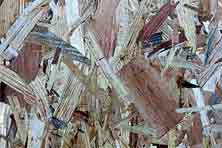
OSB (oriented strand board) weighs more than plywood.
1/4 inch: 22.72 pounds per 4×8 sheet
3/8 inch: 33.92 pounds per 4×8 sheet
1/2 inch: 45.44 pounds per 4×8 sheet
5/8 inch: 56.64 pounds per 4×8 sheet
3/4 inch: 68.16 pounds per 4×8 sheet
OSB (oriented strand board) is the plywood you see that looks like it’s made out of wood chips glued and pressed into shape. It’s less expensive than plywood, but weighs about two pounds more per sheet. I see it being used regularly on tiny house builds. If you use forty sheets, that’s eighty extra pounds.
Gypsum Wallboard (sheetrock)
3/8 inch: 49.92 pounds per 4×8 sheet
1/2 inch: 66.56 pounds per 4×8 sheet
5/8 inch: 83.2 pounds per 4×8 sheet
Sheet rock is heavy. It’s basically a rock dust squeezed between two pieces of paper. I never recommend its use in a THOW. Besides being heavy, the movement during towing will cause these panels to disintegrate around each screw, and the joints between panels will crack apart. These are good for regular homes, but not right for a tiny house.
Tiny House Total Weight
Once you’ve completed your tiny house build, you will want to have it weighed. Then you will know exactly how much weight in furnishings you can have. You will be glad you scrimped and saved every pound during the build stage.
More Ideas for tiny house weight savings:
Saving Weight On Tiny House Tile
Saving weight in the Tiny House bathroom


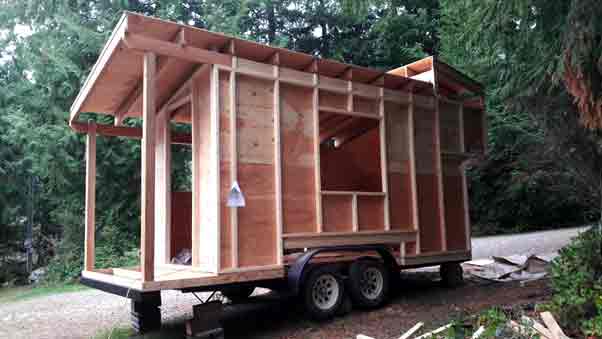
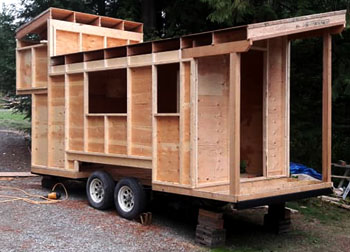

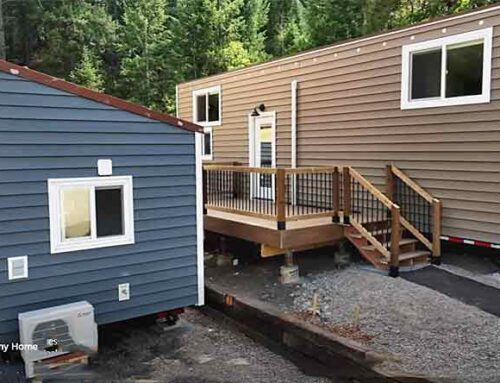
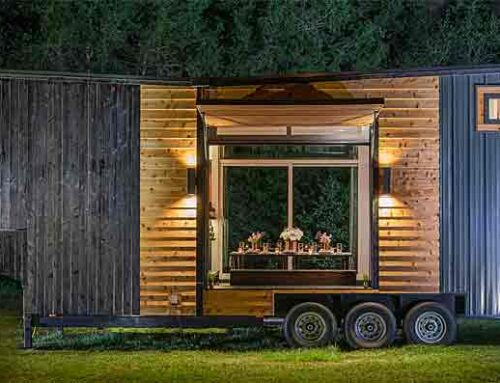
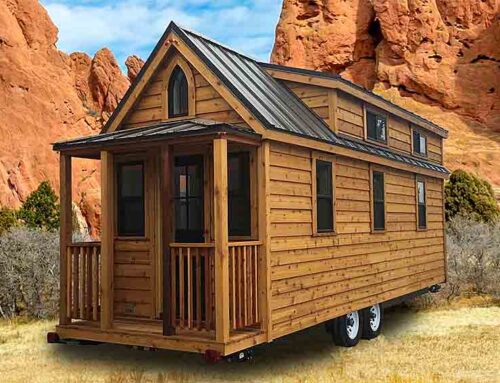
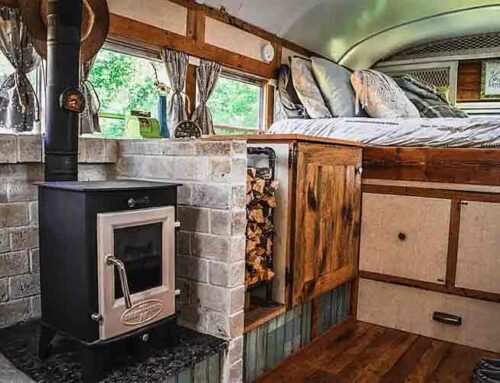
We went tiny 20 months ago. Initially we went to 353 sq ft. We love it even with our 60 lbs dog and cat. The reality of it was the times I didn’t like it was when I wanted to entertain. Even setting up a card table for 4 was elbow to elbow and didn’t feel relaxing. If a couple came to visit someone had to sit on a folding chair. That is fine for an hour but after a while even a cushioned folding chair doesn’t cut it. We were like many and said well we will just entertain outside. Often it was too hot or too windy and took much of the joy out of it. As a result I couldn’t take. It anymore and we sold our tiny place just two days ago. We are no longer officially Tony (this is very sad for my husband) but we only we up to 630 square ft. The difference is huge. I can entertain in a real living and dining room and we do enjoy having two bathrooms again. I know we can live here forever. I believe this website is invaluable for those who are considering tiny. It is wonderful in so many ways, but there are concessions and considerations. For me I just need to be able to have my friends and family over in a space where we all fit. Tiny does make you downsize and realize how much you don’t really need. We are thankful for that and will never go back. Best of luck to all who go there. You will discover a lot about yourself.